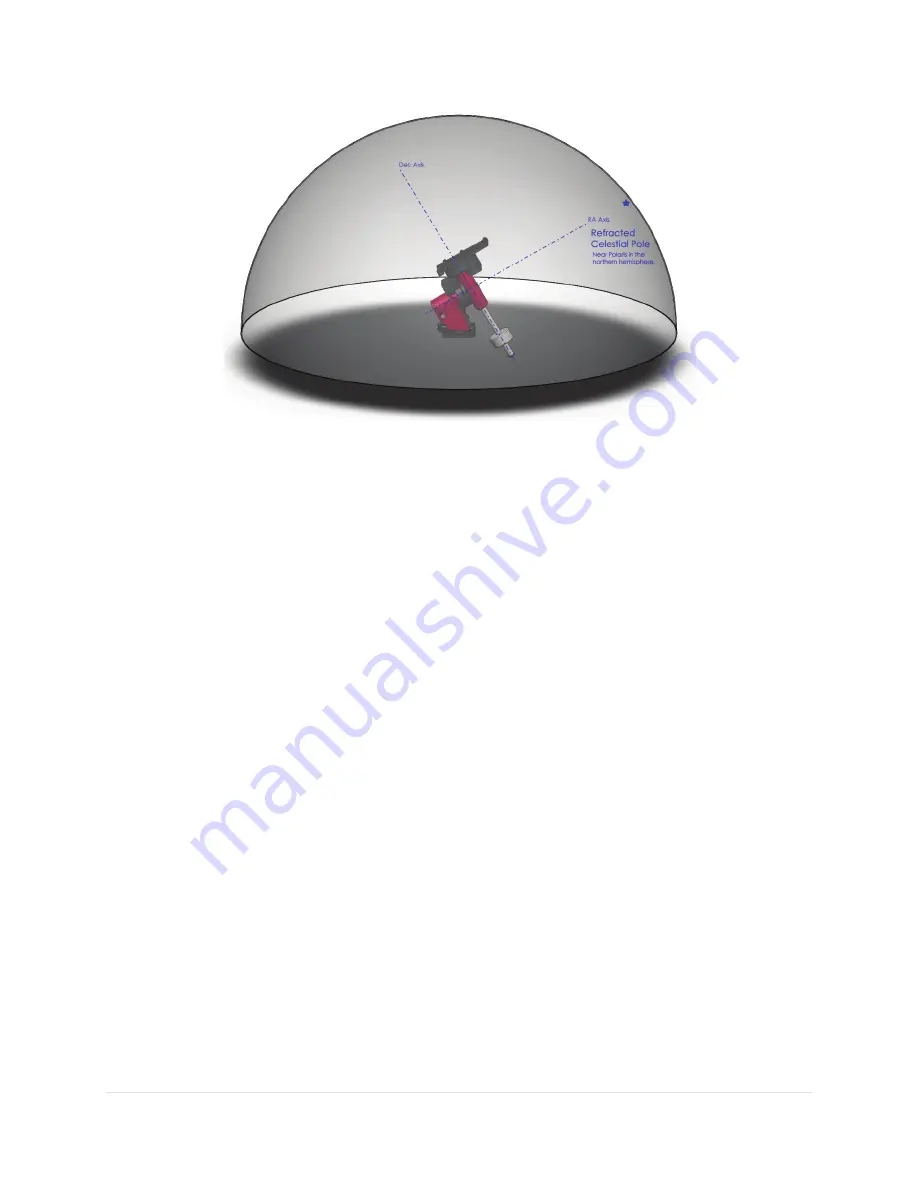
Paramount MX User Guide
12 |
P a g e
Figure 1: Paramount MX aligned with the refracted celestial pole in the northern hemisphere.
Software Bisque recommends the following polar alignment methods to ensure efficient and optimal
polar alignment.
Step 1
Use the “Quick Polar Alignment Method” (page 65) to align the mount’s polar axis to within
five arcminutes of the pole, even during daylight.
Step 2
If the pole is visible, and you have a polar alignment scope (page 69), use it to quickly align
the mount to the celestial pole.
-Or-
Use the
TPoint Add On
to quantify the mount’s polar alignment error. The
TPoint Add On’s
Polar Alignment Report indicates exactly how much the altitude adjuster (page 54) and
azimuth adjuster knobs (page 54) need to be rotated so that both axis are aligned to the
refracted pole.
See “How To” on page 65 for the best ways to achieve optimal polar alignment.
Coordinate Systems
Three common coordinate systems used when working with equatorial mountings are described below.
Making sure you understand the differences between each system now will really help troubleshooting
issues in the future.
The Horizon Coordinate System
The horizon or “horizontal” coordinate system is used to specify the position of celestial objects relative
to the local horizon. The
altitude
of an object is expressed as the number of degrees above or below the
horizon (the ground at a far distance) to the object, and is always between –90 and +90 degrees. A


































